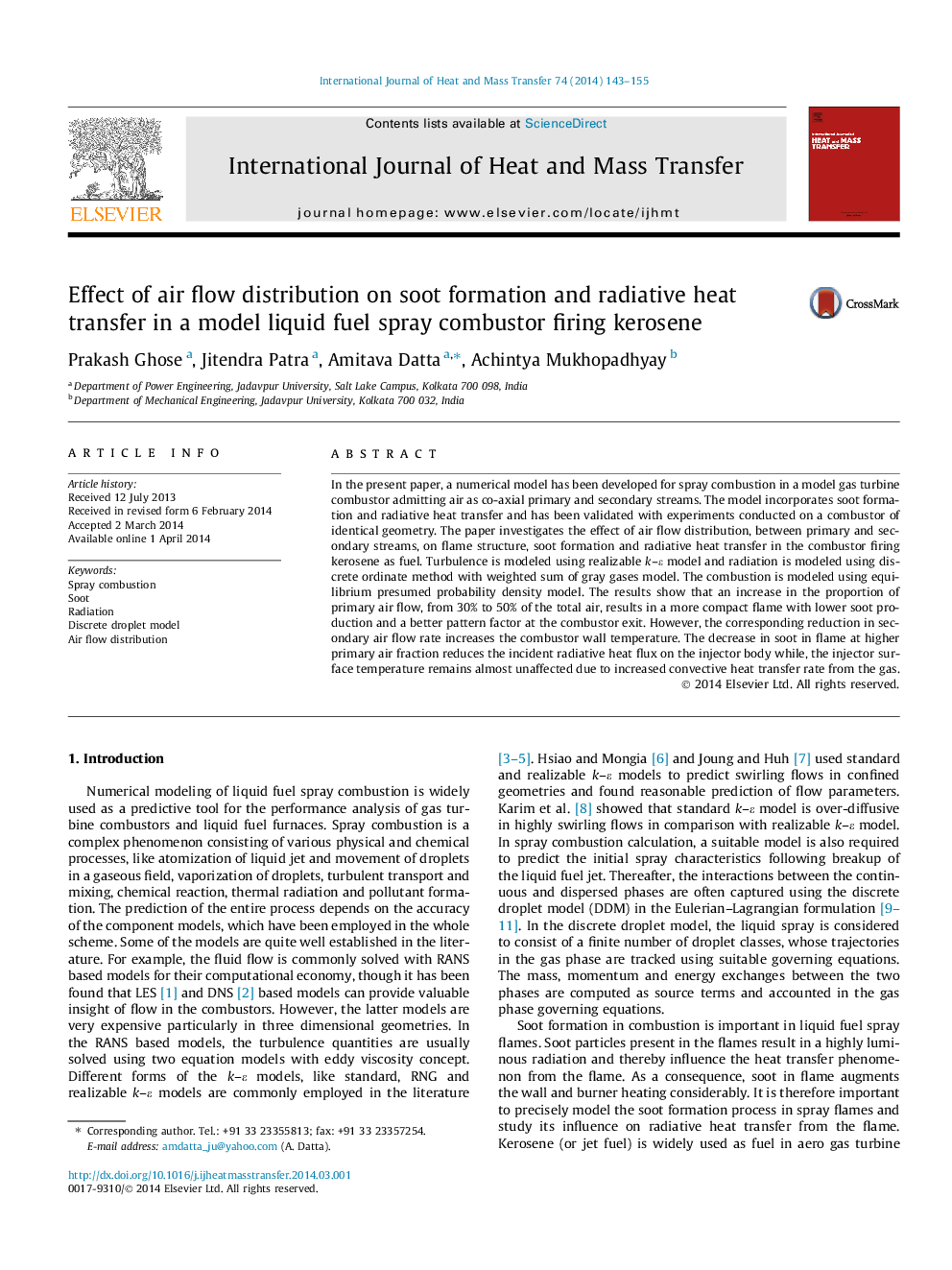| کد مقاله | کد نشریه | سال انتشار | مقاله انگلیسی | نسخه تمام متن |
|---|---|---|---|---|
| 657882 | 1458068 | 2014 | 13 صفحه PDF | دانلود رایگان |
In the present paper, a numerical model has been developed for spray combustion in a model gas turbine combustor admitting air as co-axial primary and secondary streams. The model incorporates soot formation and radiative heat transfer and has been validated with experiments conducted on a combustor of identical geometry. The paper investigates the effect of air flow distribution, between primary and secondary streams, on flame structure, soot formation and radiative heat transfer in the combustor firing kerosene as fuel. Turbulence is modeled using realizable k–ɛ model and radiation is modeled using discrete ordinate method with weighted sum of gray gases model. The combustion is modeled using equilibrium presumed probability density model. The results show that an increase in the proportion of primary air flow, from 30% to 50% of the total air, results in a more compact flame with lower soot production and a better pattern factor at the combustor exit. However, the corresponding reduction in secondary air flow rate increases the combustor wall temperature. The decrease in soot in flame at higher primary air fraction reduces the incident radiative heat flux on the injector body while, the injector surface temperature remains almost unaffected due to increased convective heat transfer rate from the gas.
Journal: International Journal of Heat and Mass Transfer - Volume 74, July 2014, Pages 143–155
